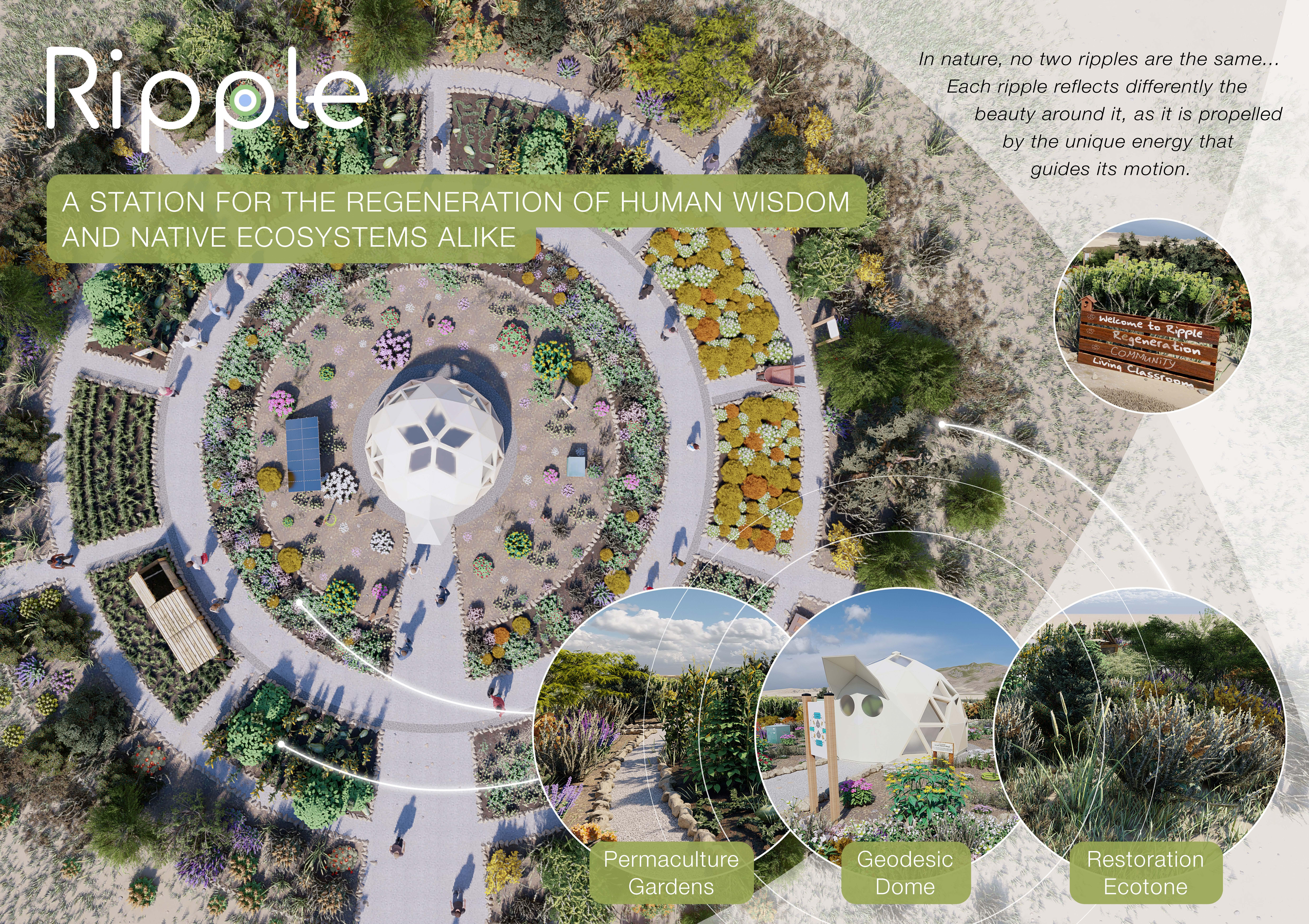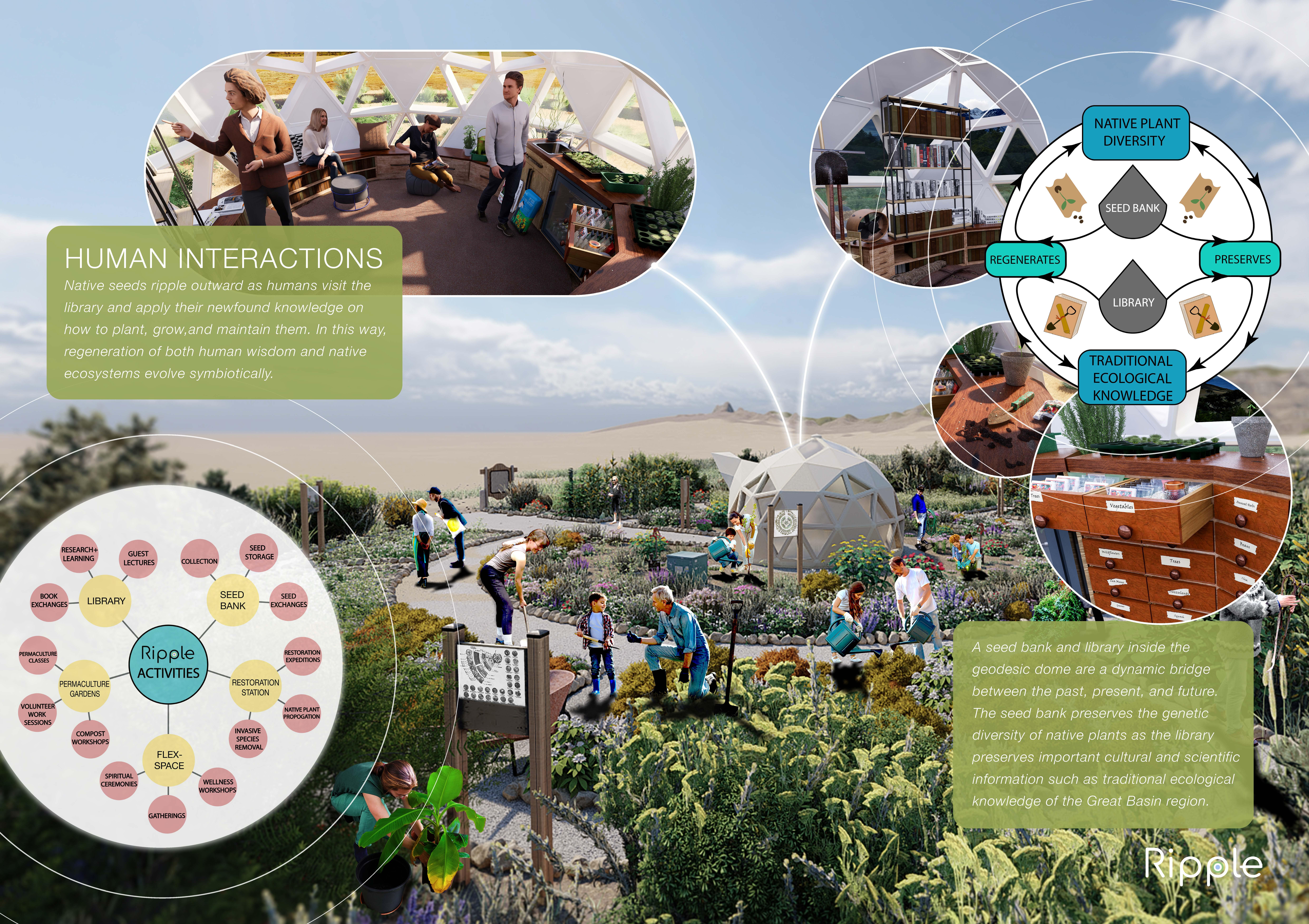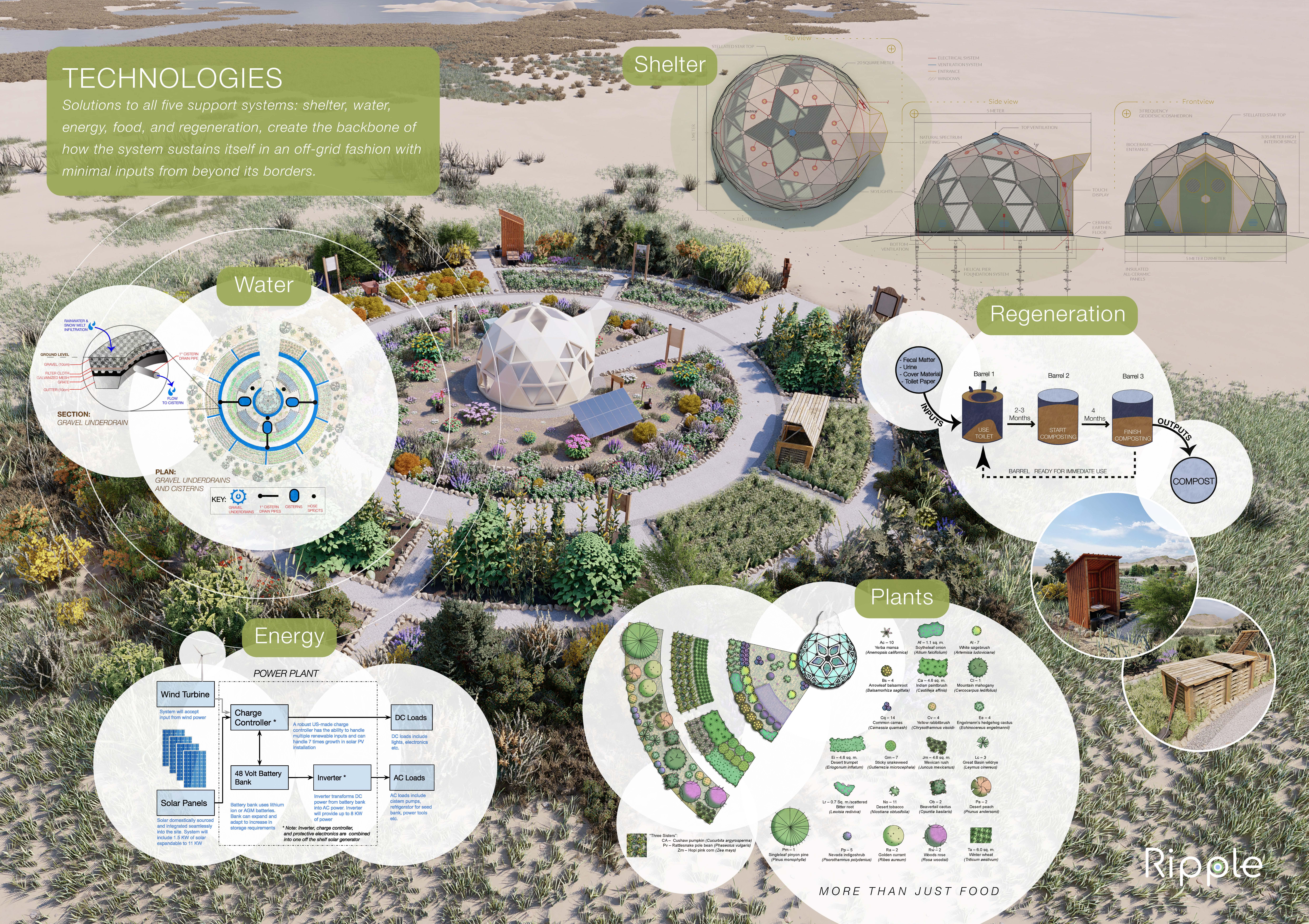COLLEGE PARK, Md. – Second-year MLA student Xiaojin Ren, from the University of Maryland’s Landscape Architecture Program (MLA) has participated in an international ecological design competition, Land Art Generator Initiative (LAGI) 2020 Fly Ranch, and won, along with several other University of Maryland students from the Department of Environmental Science and Technology (ENST).
The Land Art Generator Initiative and Burning Man Project came together to hold a multi-disciplinary design challenge, LAGI 2020 Fly Ranch, that will create the foundational infrastructure of Fly Ranch. LAGI was founded in 2008 to “engage the world in an exploration of how art in public space can actively contribute to a sustainable future, and how renewable energy infrastructure can become beautiful and relevant extensions of human culture." Learn more about the competition below!
Learn more about LAGI 2020 Fly Ranch Competition
Xiaojin Ren's story begins during her undergraduate years at the University of Maryland majoring in Ecological Technology design. She was in a program called “2+2”, where she spent her first two years of undergrad in China and her last two years at the University of Maryland’s College Park campus. Ren met one of her team leaders, Jacob Mast who was also in ENST, during her undergraduate years and they became friends. Mast heard about the project from his dad and was working with Matt Lagomarsino, another team leader from ENST, to create the initial idea and find team members. At this time, Mast and Lagomarsino had already come up with the idea about “RIPPLE” (which was given by Bas Kools, teammate and co-founder of the Geoship), and they were trying to find someone for the visual interpretation part. Kools was impressed with Ren’s hand-drawing from another competition and contacted her.
During the summer of 2020, Ren worked with Mast to improve the initial concept design. This involved finding precedent images, creating hand-drawings to better understand the site, creating a schematic plan, giving suggestions on how to make the design more practical and making models with SketchUp and Twinmotion to test their ideas. In mid-September after several meetings, Lagomarsino and Ren made the final decision on the arrangement of the site and Ren began creating the final hand drawn schematic plan. The proposal was submitted on October 30th, 2020 and currently the team has been chosen as one of the top 10 selected design teams.
Ren says "I really appreciate having the chance to be one of the group members. Instead of regarding it as a competition, I take this more as a learning process. I’ve improved my hand-drawing, modeling, rendering, as well as Photoshop skills a lot." She wasn't able to do the final modeling/rendering because of her busy schedule last semester. The final model was done by Scherwyn Udwadia, an interior designer and artist from India.
Ren continues to say she still "learned so much during the summer when preparing for it. I was told that I may need to do the modeling/rendering, so I learned Twinmotion for it. It is a great example for me to understand how different professionals work together on a landscape design project and what landscape architects can do. People were gathered purely by the enthusiasm of design and the love for nature, and everyone has been extremely hardworking during the process. It was a fun process to work, learn, and make friends." Learn more about RIPPLE and view their boards below.


